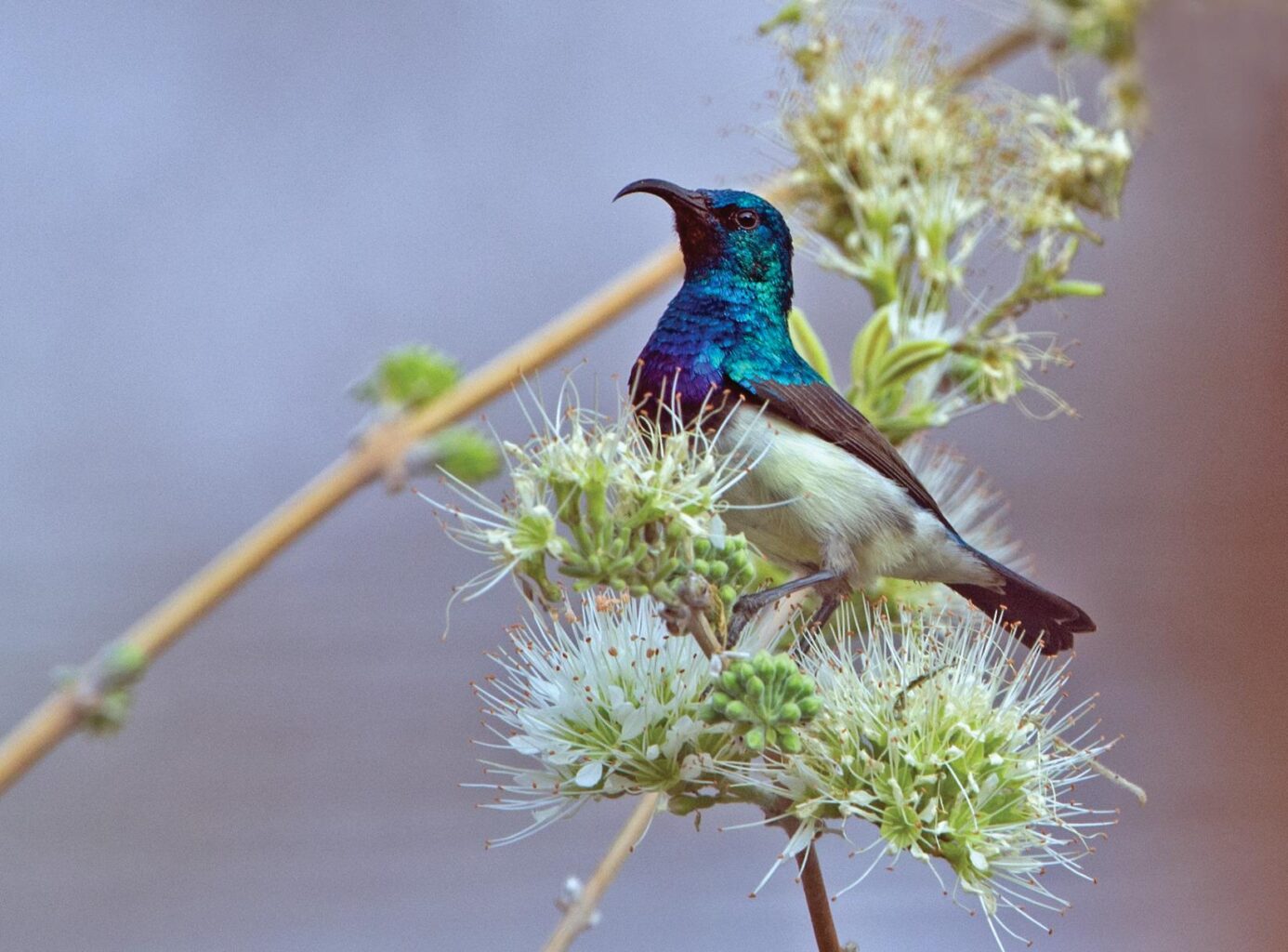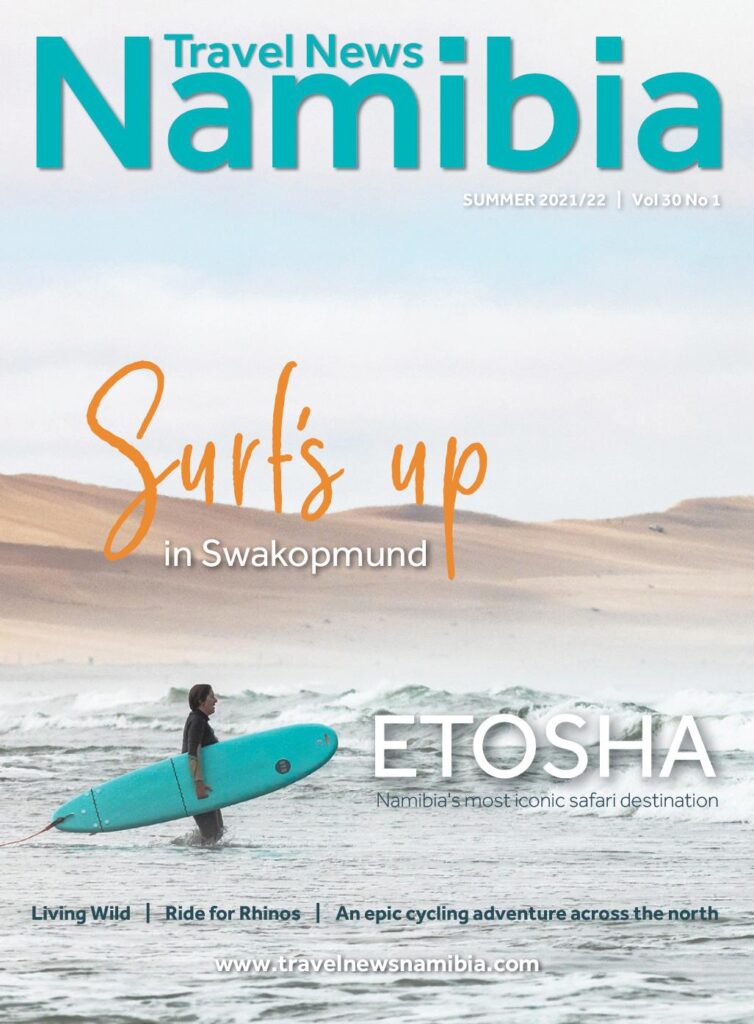

What’s in a name
I think the only bird which has been named and featured in a movie is Jonathan Livingston Seagull. Bird on a wire by Leonard Cohen is the song most covered by other artists – about 400 different artists, I think. If this is because it is such a beautiful song or if it is about the bird I do not know. What is important is that I do not know what bird it was, but I think it has been sitting on the same wire for the last 50 years. The most famous book bird, To Kill a Mockingbird by Lee Harper, is already dead because it was killed in the book.
Text Pompie Burger | Photographs Pompie Burger
From the Summer 2021/22 issue
Knowing your birds obviously means you must know their name. My daughter’s solution to the problem is calling them water chicken, dust chicken, fish chicken, bee chicken, sugar chicken etc. That’s the baseline. Next in line is knowing them according to your mother tongue. Going to the next level is calling them by their scientific name. If you are an old hand at birding (age and birding experience) you call them by their Roberts number, like number one I think is an Ostrich, but unfortunately this is days gone by.
Being a rock spider from Mpumalanga I am a bit biased as far as bird names are concerned, but to be quite honest the Afrikaans names for birds are much more appropriate and spot on than in any other language. Unfortunately I know only Afrikaans and English, although a colloquial German name for a vulture is Dreckvogel, which does sound quite suitable. As far as English names are concerned, one would expect nothing better because they are not good at many other things either (think rugby). I think they give bird naming a bad name. Imagine a name like Grey Turaco when you can call it Kwêvoël.
Unfortunately there are a few names that got lost in translation. A very Afrikaans tour guide was asked what that bird (Ground Hornbill) is called in English. Knowing the Afrikaans name Bromvoël, he quickly translated it as Hummingbird. Obviously a brilliant translation, because brom means hum.
As one would expect, many of the pioneering ornithologists gave bird names that are not so applicable, but I suppose your originality dries up after naming 400 different birds. Some even gave them their own names, like Mr. Ruppel who named two birds after himself – Ruppel’s Korhaan and Ruppel’s Parrot. He must have been quite important and famous. One rather noble name was given by Francois Levaillant, boss of Klaas, his Khoi servant. Levaillant gave the name Klaas’s Cuckoo to a very handsome little bird.
In a few cases the English got it right by using (stealing) the Afrikaans name, for instance the Hamerkop. Maybe they should have done it more often? Unfortunately, a few Afrikaans bird names are not so spot on either, like Katlagter (laughing cat??) for a Babbler. One other good option for them would be to look at the name sunbird Suikerbekkie (sugar-eating bird). Imagine calling owls moonbirds.
Apart from the few arrogant selfnamers, most birds have been called either according to their call (Bokmakierie, Hadeda, Hoopoe, Cuckoo, Diederick), bill (Shoebill, Saddlebill, Hornbill, Waxbill), colour (Carmine Bee-eater, Crimson-breasted Shrike, Tawny Eagle – although this is not so original, having about 10 brown eagles in Namibia), diet (Oystercatcher, Bee-eaters, Kingfishers, though somehow they did not get that one 100% correct, only two of the 10 kingfishers in Namibia eat fish), feet (Longclaw), tail (Swallow-tailed Bee-eater, Wire-tail Swallow, Racket-tailed Roller), display (Rollers), occupation (Weavers, Woodpeckers, Honeyguide), inappropriately (Thick-knee, when it is actually their ankles and not their knees that are thick), attachments (Wattled Crane, Wattled Starling), crown (Crowned Eagle, Long-crested Eagle), habitat (Marsh Owl, Forrest Buzzard, Marsh Harrier), size (Pygmy Falcon, Goliath Heron) or markings (usually on the chest: Rufous-breasted Sparrowhawk, White-bellied Bustard, Streaky-breasted Flufftail).
The saddest name for any Namibian bird must be the Lark- like Bunting, but to give larks names is a rather challenging task because they all look alike. The cisticolas are another big challenge. No wonder they most often ended up being named by their call (Rattling, Singing and Tinkling).
Scientific names or their translation are mostly spot on. Like the Tambourine Dove, Turtur tympanistria: tympanistra is the Goddess Cybele, the personification of Mother Earth. She played the drum, which is pretty much the sound of the Tambourine Dove call. A rather unimaginative scientific name is Cinnyris (sunbirds), from the Ancient Greek name KIVVUPIC for an unknown small bird mentioned by Hesychius of Alexandria, obviously not a great bird lover.
The Dutch were apparently forced to get themselves a surname long ago. Thinking it was a rather exciting exercise they took the most hilarious surnames imaginable, like Hoenderpoepol. At least the result is a wide range of wonderful and more imaginative names than most of the bird names. If I will be forgiven, one cannot expect much better from a flock of bird watchers.
Indeed, what is in a name, especially in birds. I have never called a bird by its name and had it answering my call. Come to think of it, I seldom answered when my mother called Pompieee. TNN






